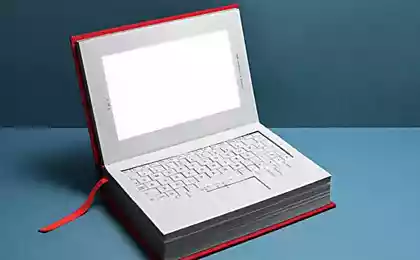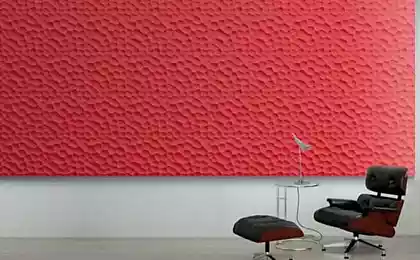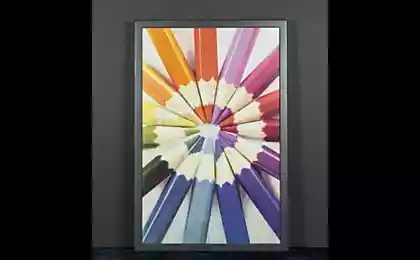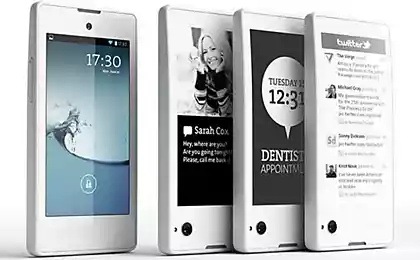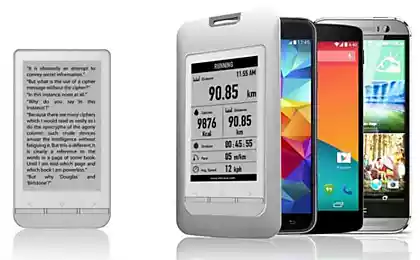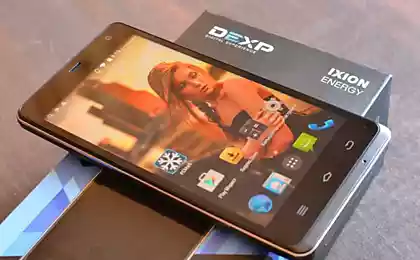1972
Smartphones and electronic ink: an uneasy symbiosis
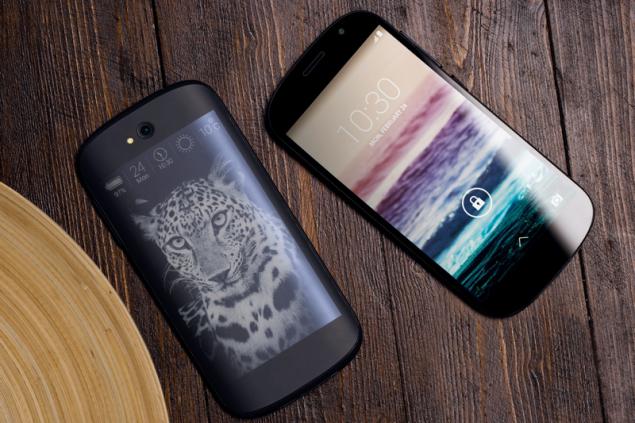
We talked a lot about one of the main advantages YotaPhone, the second display electronic ink. But we usually do not go into the details: Why did we choose this technology, what problems and difficulties arose in our way, what are the advantages and disadvantages in the displays on electronic ink, especially for smartphones - all this we want to tell.
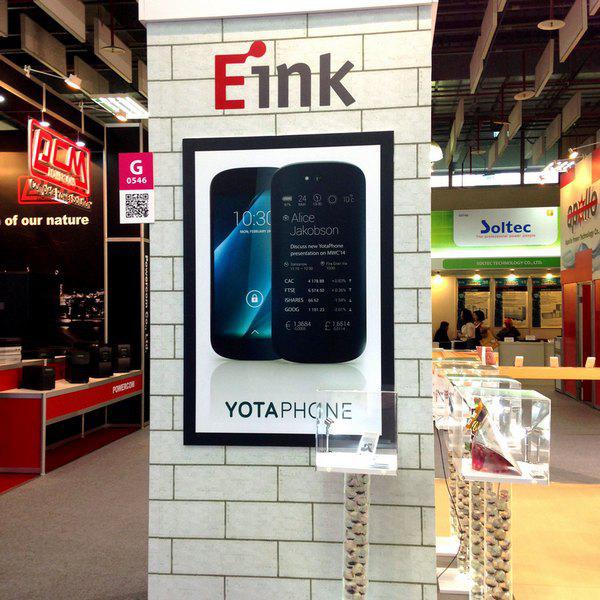
Electronic ink technology has some fundamental differences from traditional LCD displays. Let's see what they are.
In liquid crystal displays an image is formed in the following way: each pixel consists of three subpixels of red, blue and green. Behind the pixel matrix is light. Sami subpixels represent cells in which one is a liquid crystal. Under the influence of the electricity they change the configuration that allows you to adjust the color of the pixel. When a power failure liquid crystals return to some original form, the backlight turns off and the image disappears.

In the "electronic paper" liquid crystals do not have at all. Instead, each pixel contains a capsule with solid pigment particles, and the backlight behind the pixel matrix is absent. For imaging using electrophoresis phenomenon: the electricity supply capsules turn one or the other side. To maintain this state they do not require energy, capsules remain in the same position until the next feeding of the electric pulse.


At highlighting and maintaining the status of pixels electricity is not wasted, only replaced the image. As a result of such a display consumes several times less electricity compared to LCDs.
The second advantage of electronic ink - perfect readability in bright light as a conventional printed text. This is due to the use of solid particles for image formation. But every coin has two sides, and when working in the dark, you'll need an external light. However, as in the case of the paper book.
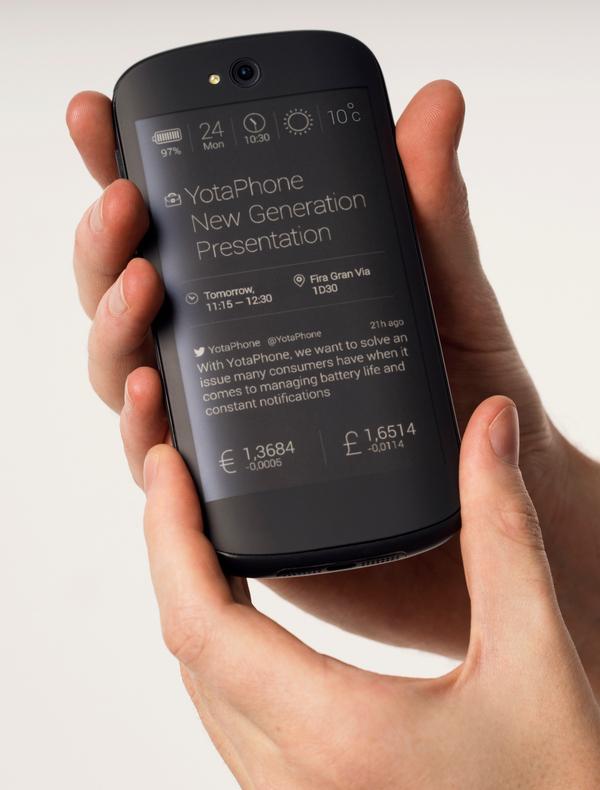
The main drawback of electronic ink is a monochrome image, the most qualitative samples display 16 shades of gray. To date, there is no quality color electronic ink technology. Most weaknesses in existing developments:
• Low color saturation, especially in low ambient light.
• On average, half the resolution compared with a monochrome display.
When choosing a technology for the second display YotaPhone decisive factor was the very low power consumption of electronic ink. And their ability to maintain an image even with a fully discharged battery extends the range of usage scenarios smartphone. Electronic ink display does not need to turn off to save power, it always works. Pre-select the information you wish to receive on the second display, you will not need to take even a smartphone in hand to immediately be aware of the various reminders, updates and notifications. One need only look at the second display. More about this we wrote here .
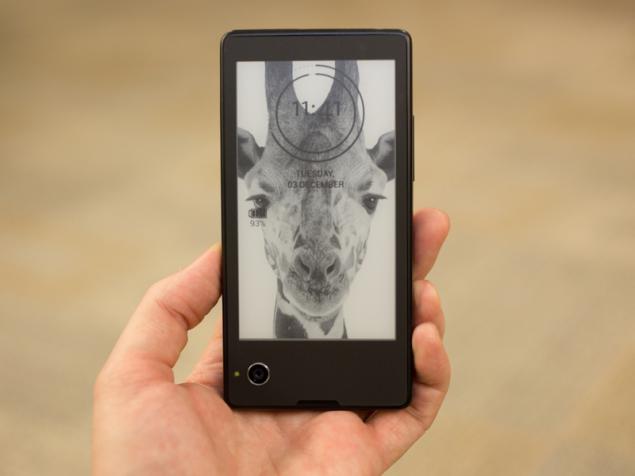
The difficulties of implementing the second display h4> People often ask why we can not make the second display of the same resolution as the first? This is associated with serious technological obstacles. For example, the second display with a resolution of 1280x720 would require the introduction of a highly integrated control circuit, which does not exist yet. And its development will require many months of work. But even if it existed, a large number of findings and considerable physical size would not allow to enter into a chip housing modern comfortable smartphone.
I must say that the control chip has become the main source of difficulties when working on both generations YotaPhone. It is a silicon array and can not be bent without breaking. This severely limits our ability to create curved case. In particular, the housing YotaPhone second generation has a small bend laterally.
The second reason, which prevents the growth of the second resolution of the display is to increase the size of the contact pads on the perimeter of the matrix. This array of findings is very difficult to hide under a narrow bezel.
Challenging the assembly was lamination smartphone with the second display panel, particularly on bends, this process requires a very high accuracy. Otherwise pasting possible, air bubbles, cracking, and so forth. The situation is complicated by the fact that the second generation YotaPhone became the first smartphone that uses curved glass Gorilla Glass, which further complicates the assembly process.
Features electronic ink displays require a very careful approach to the development of interfaces. Each element must be created taking into account the monochrome image, the lack of illumination and low refresh rate. For the same reason you need to optimize the output to display a variety of information - text, images, animations and videos.
About the second display in the second generation YotaPhone h4>
This autumn leaves YotaPhone new generation. He will receive a second e-ink display with a resolution 960h540. It will be a full touchscreen that will not only increase comfort of work, but also enhance the ability of management smartphone when working with the main display.
Some people fear that the touchpad will worsen the sharpness and contrast of the second display. Several years ago, it could affect picture quality. But today touchpads already reached a level of "invisibility" that virtually no appreciable effect.
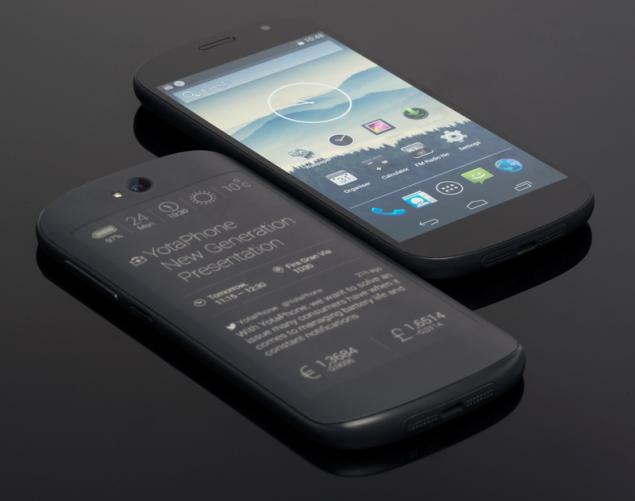
A few years ago, the market appears on e-ink devices illuminated. We are considering the possibility of introducing backlight YotaPhone second generation, however, this idea has several "buts»:
• High power consumption. Lights would significantly reduce the main advantage of the second display - energoekonomichnost.
• Difficulty quality installation on the perimeter of a thin curved display.
• Thickening of the assembled display assembly.
• Increase the value of the device.
Future Plans h4> Now some manufacturers are working on color displays on electronic ink, as well as to increase the refresh rate of the image. We are closely monitoring the progress of the developers and, of course, considering the use of new products in the future generations of our smartphones. In particular, we have decided to periodically submit for your consideration the most interesting and promising ideas that can be implemented in our smartphones. Watch for new posts.
Source: habrahabr.ru/company/yotadevices/blog/227173/
Employees with experience in the company for more than 2 years earn 50% less
Bianca Balti for Harper's Bazaar Spain in outfits from Gucci, Blumarine and Givenchy.











